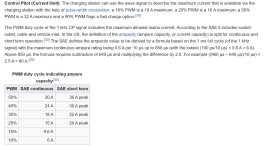hello guys .
i want to connect my car (not DIY EV) to a small solar array i have .
i have custom solar inverter which first boosts the 48v battery voltage to 400V DC and than converts to 220v AC (dual stage inverter DC-DC-AC)
i wonder if i can connect the car directly to 400V DC bypassing the AC inverter , as described here Type 2 connector - Wikipedia under "pins" , you can see that L2 and L3 phase pins can accept DC voltage (low and mid DC) , also wonder if the standard current control with PWM duty cycle on CP also applied to DC .
would like to hear if anybody has any experience with it .
thanks
i want to connect my car (not DIY EV) to a small solar array i have .
i have custom solar inverter which first boosts the 48v battery voltage to 400V DC and than converts to 220v AC (dual stage inverter DC-DC-AC)
i wonder if i can connect the car directly to 400V DC bypassing the AC inverter , as described here Type 2 connector - Wikipedia under "pins" , you can see that L2 and L3 phase pins can accept DC voltage (low and mid DC) , also wonder if the standard current control with PWM duty cycle on CP also applied to DC .
would like to hear if anybody has any experience with it .
thanks



